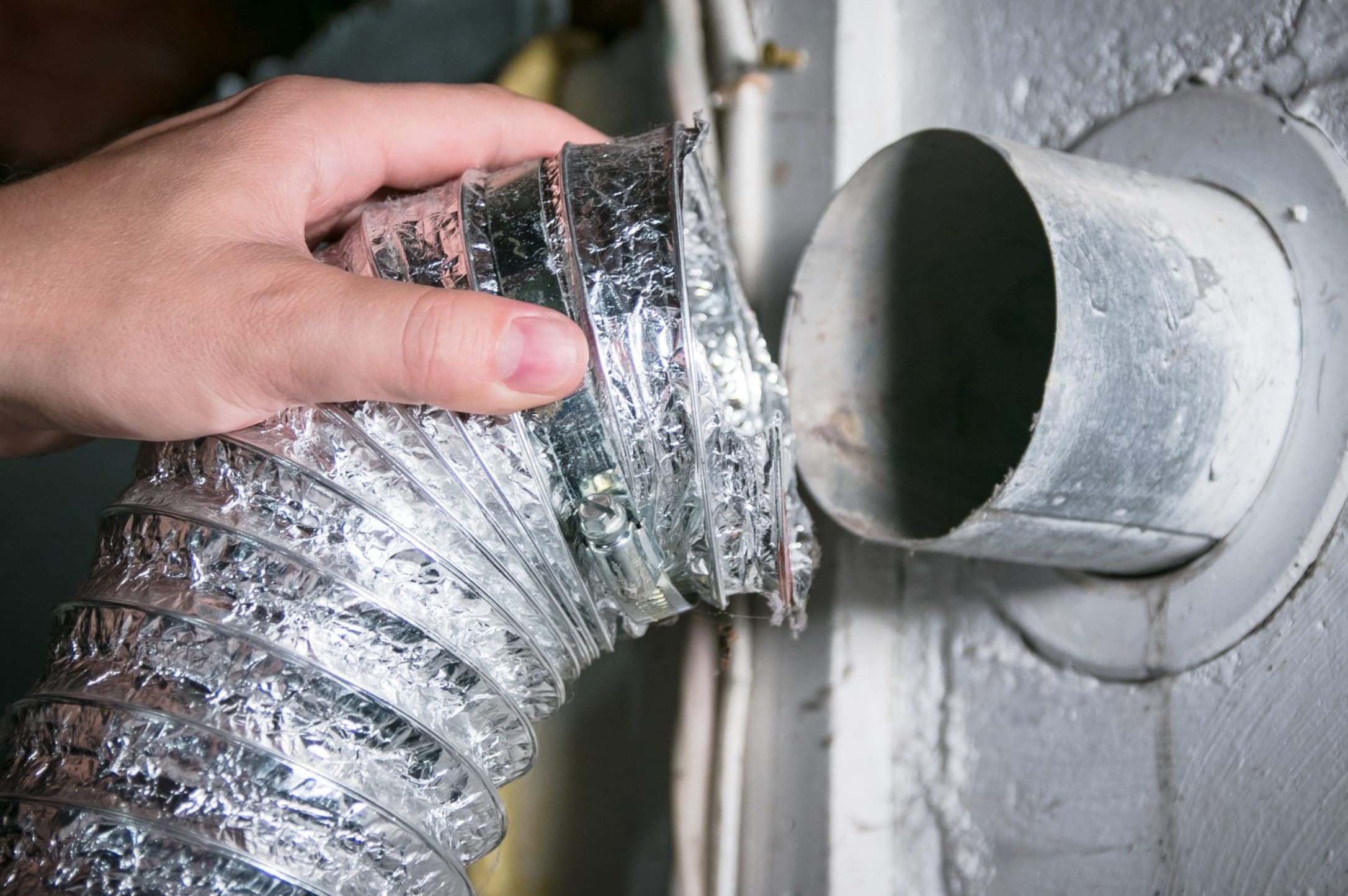

Articles
How Long Can Clothes Be Left In The Washer
Modified: December 6, 2023
Learn how long clothes can safely be left in the washer without causing damage or odor. Read our informative articles for expert advice and tips.
(Many of the links in this article redirect to a specific reviewed product. Your purchase of these products through affiliate links helps to generate commission for Storables.com, at no extra cost. Learn more)
Introduction
Doing laundry is an essential chore in our daily lives. It involves sorting, washing, drying, and folding, all of which require time and effort. However, life can sometimes get busy and leave us with little time to tend to our laundry immediately. As a result, we may find ourselves wondering how long it is safe to leave clothes in the washer.
In this article, we will explore the effects of leaving clothes in the washer for extended periods of time, the potential risks involved, and how to determine the time limit for clothes in the washer. Additionally, we will provide helpful tips for properly managing laundry time and avoiding any negative consequences.
Understanding the impacts of leaving clothes in the washer for too long is crucial to maintain the quality and cleanliness of our garments. So, let’s delve into the details and ensure that we are taking the necessary steps for effective laundry management.
Key Takeaways:
- Don’t leave clothes in the washer for too long to avoid musty odors, mold, and mildew. Promptly transfer clothes to the dryer or air dry to maintain freshness and quality.
- Properly manage laundry time by creating a schedule, staying nearby during the washing process, and utilizing time-saving features on your washing machine. This helps preserve the cleanliness and longevity of your clothes.
Understanding the Effects of Leaving Clothes in the Washer
Leaving clothes in the washer for an extended period of time can have several negative effects on the garments. One of the main concerns is the development of a musty or mildew smell. When wet clothes are left stagnant in the washer, it creates a damp environment that is ideal for the growth of bacteria and fungi, resulting in an unpleasant odor.
In addition to the odor issue, leaving clothes in the washer can also lead to mold and mildew growth on the fabric. Mold and mildew can cause discoloration, degradation of the fabric fibers, and even potential health risks. It is particularly problematic for people with allergies or respiratory conditions as inhaling mold spores can trigger allergic reactions or respiratory symptoms.
Furthermore, leaving clothes in the washer can result in wrinkling and possible damage to the fabrics. The prolonged exposure to moisture can cause wrinkles to set in, making it difficult to remove them even after drying. This is especially true for delicate fabrics such as silk or satin, which can easily become permanently creased if left in the washer for too long.
It is important to note that the effects of leaving clothes in the washer may vary depending on factors such as the type of fabric, the temperature of the wash cycle, and the duration of time the clothes are left untouched. Therefore, it is crucial to be mindful of these factors and take appropriate steps to prevent any potential damage.
Potential Risks of Leaving Clothes in the Washer
Leaving clothes in the washer for an extended period of time poses several risks that can impact both the garments and our health. One of the primary risks is the growth of bacteria, mold, and mildew on the clothes. These organisms thrive in damp conditions, and when left undisturbed in the washer, they can multiply rapidly and create a breeding ground for potentially harmful microorganisms.
The presence of bacteria, mold, and mildew on clothes can cause skin irritation and allergic reactions when we wear them. It can manifest as itching, rashes, or even more severe symptoms in individuals with sensitivities or allergies. Moreover, the bacteria can transfer onto other garments during subsequent wash cycles, leading to contamination and further spreading of the microorganisms.
Another risk of leaving clothes in the washer is the potential damage to the washing machine itself. When wet clothes are left sitting in the washer for an extended period, it can lead to the development of a foul odor in the machine and even clog the drains. The accumulation of lint, detergent residue, and stagnant water can cause the machine’s components to deteriorate, resulting in reduced efficiency and costly repairs.
Additionally, leaving clothes in the washer for too long can result in increased energy consumption and water wastage. The extended time in the washer requires additional cycles or rewashing to remove the unpleasant smell or wrinkles. This not only increases your electricity and water bills but also has a negative impact on the environment due to the unnecessary use of resources.
In summary, the potential risks of leaving clothes in the washer include the growth of bacteria, mold, and mildew that can cause skin irritation and allergic reactions, damage to the washing machine, and increased energy and water consumption. It is crucial to be aware of these risks and take the necessary steps to avoid them.
To prevent mildew and odors, it’s best to remove clothes from the washer promptly. Leaving them for more than a few hours can lead to bacterial growth and musty smells.
Determining the Time Limit for Clothes in the Washer
While there is no exact time limit for leaving clothes in the washer, certain guidelines can help determine how long is too long. It is generally recommended to promptly remove clothes from the washer as soon as the wash cycle is complete. This ensures that the clothes are not left sitting in a damp environment for an extended period, minimizing the risks of odor, mold, and mildew growth.
However, if circumstances prevent you from attending to the laundry immediately, there are a few factors to consider when determining the time limit for clothes in the washer:
- Type of fabric: Delicate fabrics, such as silk or lace, are more susceptible to damage and should not be left in the washer for an extended period. These fabrics are prone to wrinkling and can be easily damaged by prolonged exposure to moisture.
- Temperature of the wash cycle: Higher wash temperatures can help eliminate some of the bacteria and odors. Therefore, clothes washed at higher temperatures may have a slightly longer time tolerance in the washer compared to those washed at lower temperatures.
- Duration of time: The longer clothes remain in the washer, the greater the risk of developing odors, mold, and mildew. As a general rule, it is advisable not to leave clothes in the washer for more than a few hours.
To ensure the longevity and cleanliness of your clothes, it is best to remove them from the washer as soon as possible. Promptly transferring them to the dryer or hanging them up to air dry can help prevent the development of unwanted odors and wrinkles.
It is also important to note that different washing machine models may have varying levels of ventilation and moisture control, affecting how long clothes can safely be left inside. Additionally, some machines have features like delayed start settings, which allow you to program the wash cycle to start at a specific time. This can be a useful tool to ensure that your laundry is ready when you need it without the risk of it being left in the washer for too long.
By being mindful of these factors and promptly attending to your laundry, you can ensure that your clothes remain fresh, clean, and in good condition for longer.
Tips for Properly Managing Laundry Time
Properly managing laundry time can help ensure that your clothes are clean, fresh, and free from any negative odors or damage. Here are some helpful tips to effectively manage your laundry routine:
- Create a schedule: Set a specific day or days of the week for doing laundry. Having a consistent schedule will prevent clothes from piling up and reduce the likelihood of needing to leave them in the washer for too long.
- Sort your laundry: Before starting the wash, separate your clothes based on color, fabric type, and washing instructions. This will allow you to wash similar items together and avoid any potential color bleeding or damage.
- Prioritize time-sensitive items: If you have clothes that need to be worn or used urgently, prioritize washing them first. This ensures that you have them clean and ready for use without the need for extended time in the washer.
- Stay nearby: When you start a load of laundry, try to stay nearby so you can attend to it promptly once the wash cycle is complete. This helps prevent clothes from sitting in the washer for longer than necessary.
- Get to know your machine: Familiarize yourself with the features and settings of your washing machine. Some machines have built-in timers or alerts that can remind you when the wash cycle is finished.
- Transfer promptly: As soon as the wash cycle is complete, promptly transfer the clothes to the dryer or hang them up to air dry. This prevents the clothes from sitting in a damp environment, reducing the risk of developing odors or mold.
- Practice good hygiene: To maintain the cleanliness of your washer, regularly clean the machine itself. Run a maintenance cycle or use cleaning products specifically designed for washing machines to remove any buildup or residue.
- Organize your laundry area: Keep your laundry area clean and organized to streamline the process. Ensure that you have separate bins or hampers for dirty and clean clothes, and make sure all necessary supplies, such as detergent, are readily available.
- Consider time-saving features: If available, take advantage of time-saving features on your washing machine, such as quick wash or express cycles. These settings can help expedite the laundry process, allowing you to complete loads faster.
By following these tips and incorporating them into your laundry routine, you can efficiently manage your laundry time and maintain the cleanliness and quality of your clothes.
Conclusion
Properly managing your laundry time is essential for preserving the cleanliness, freshness, and longevity of your clothes. Leaving clothes in the washer for too long can result in unpleasant odors, mold and mildew growth, and potential damage to both your garments and washing machine. By understanding the effects and potential risks and taking proactive measures, you can ensure that your laundry routine remains efficient and effective.
Remember to promptly remove your clothes from the washer once the wash cycle is complete. Consider the type of fabric, wash temperature, and duration of time when determining how long clothes can safely be left in the washer. Practice good laundry habits such as sorting clothes, prioritizing time-sensitive items, and staying nearby during the washing process.
Additionally, familiarize yourself with your washing machine’s features and utilize time-saving options when available. Keep your laundry area organized and clean, and regularly maintain your washing machine to prevent any buildup or residue that can affect the cleanliness of your clothes.
By implementing these tips and being mindful of proper laundry management, you can not only ensure that your clothes are clean and fresh but also extend their lifespan, saving you time, money, and the hassle of replacing damaged garments.
So, let’s strive to stay on top of our laundry routine, prioritize timely laundering, and enjoy the satisfaction of clean and well-maintained clothes.
Frequently Asked Questions about How Long Can Clothes Be Left In The Washer
Was this page helpful?
At Storables.com, we guarantee accurate and reliable information. Our content, validated by Expert Board Contributors, is crafted following stringent Editorial Policies. We're committed to providing you with well-researched, expert-backed insights for all your informational needs.















0 thoughts on “How Long Can Clothes Be Left In The Washer”